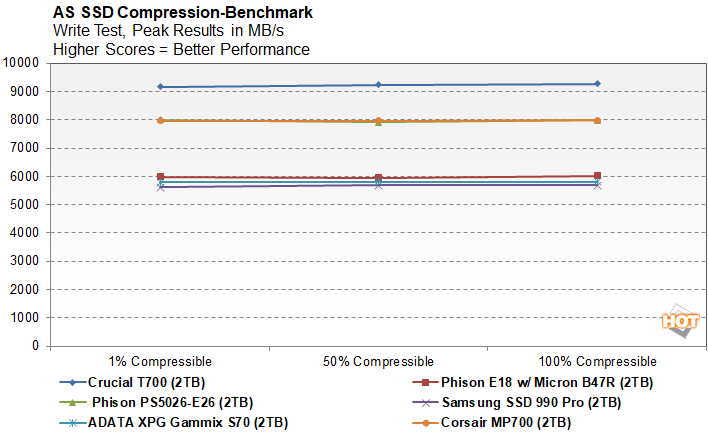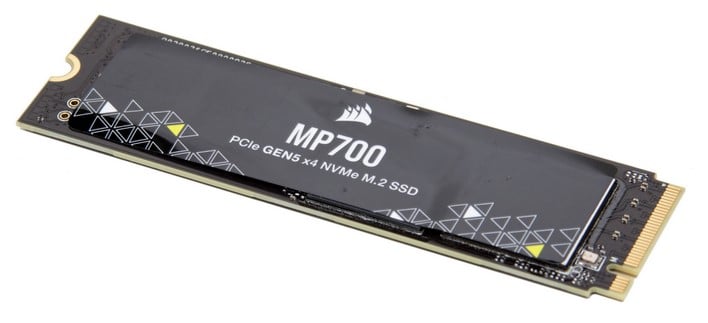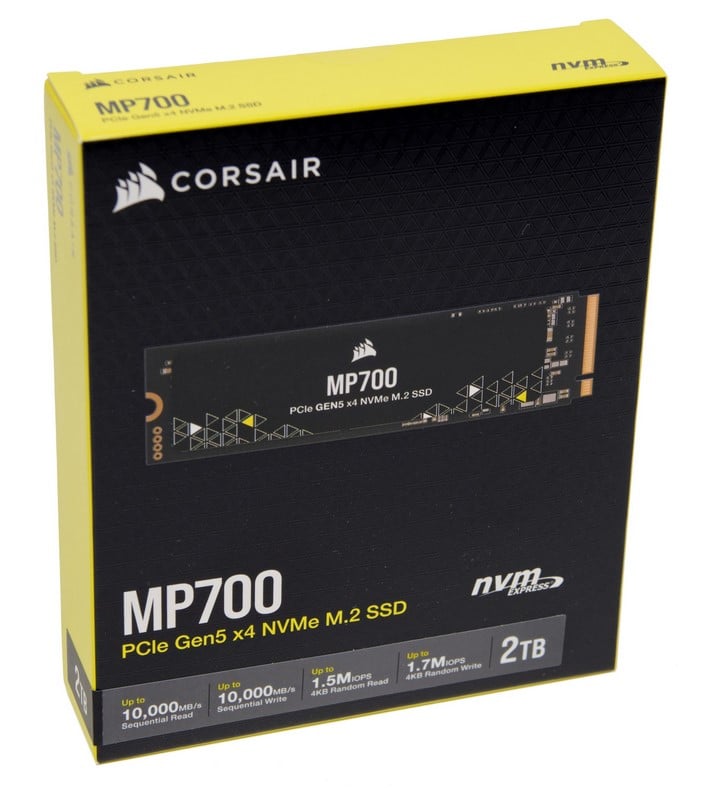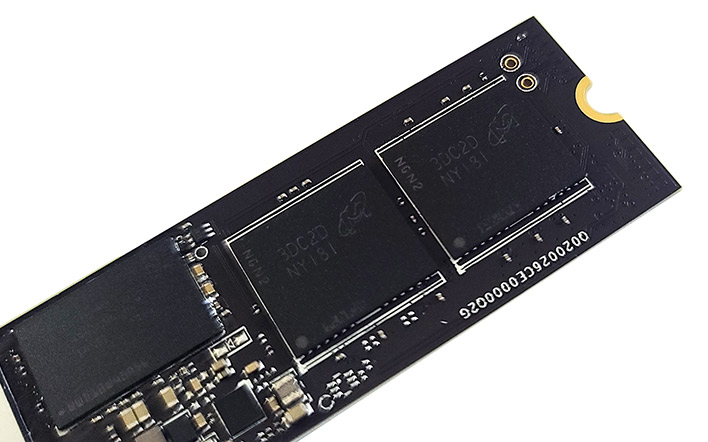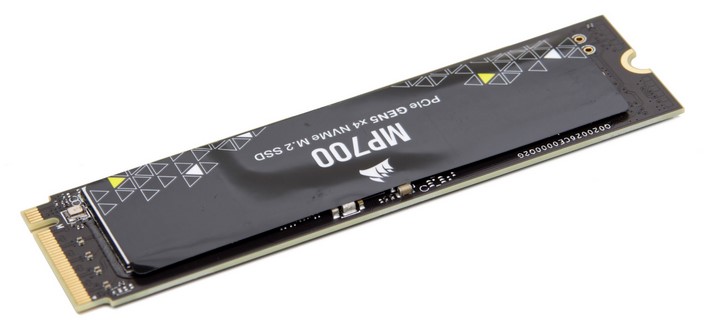Corsair MP700 PCIe 5 SSD Review: 2TB Screaming At 10GB/S
Corsair Steps Out With Its First PCIe 5 SSD And It's A Speed Freak
| Corsair MP700: Starting At $169.99 (1TB), $289.99 (2TB) The Corsair MP700 SSD is crazy fast and breaks the 10GB/sec barrier, courtesy of Phison's E26 controller and its PCIe Gen 5 interface. Say hello to 10GB/sec of glorious bandwidth.
|
|||

|

|
||
The PCI Express 5 interface is finally here and it's becoming more ubiquitous on current-gen PC platforms every day. Of course, the first devices in market that can take advantage of the copious bandwidth PCIe 5 brings are solid state M.2 sticks that will provide a perceptible upgrade in system responsiveness and compute throughput for enthusiasts from all walks of life, including gamers and workstation content creation pros.
And so, they're coming in hot, so to speak. SSDs from the likes of Crucial, Adata and Corsair are waiting in the wings to be tested, the first round of which is powered by Phison's potent E26 PCIe Gen 5 SSD controller for ultra-high sequential transfers and low latency response times. In fact, the Corsair MP700 we have on the test track today is packing the Phison E26 on its PCB and we think you'll like its features and specs.
So, let's dig into those without further banter and then fire up what looks to be another high-quality product from a brand that's been synonymous with top notch PC components for decades now, Corsair...
Corsair MP700 Specifications And Features
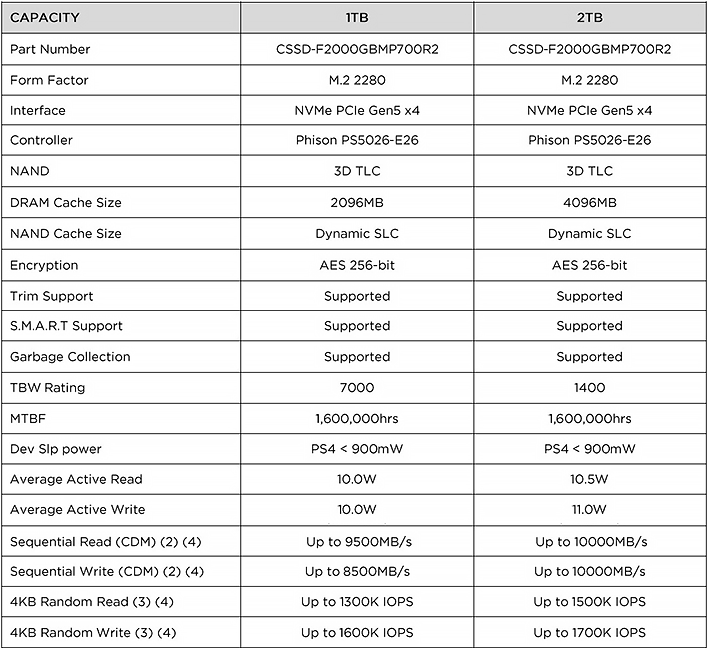
Find The Corsair MP700 PCIe 5 SSD @ Amazon


Corsair MP700 SSD Front And Backside View - PCIe Gen 5 M.2 Storage
We will underscore again, however, that some sort of cooling is absolutely required for these ultra-high performance SSDs. This non-heatsink model above will operate without added cooling, but under sustained loads, it will heat up quickly and throw errors.
Other than these cooling considerations, the Corsair MP700 looks just like the vast majority of high-end M.2 drives currently on the market. The drives use the common M.2 2280 form factor and features a dark-colored PCB with both sides of the board populated with an array of components (at least on the 2TB model we evaluated).
Both sides of the PCB are covered, however, either by a stylized adhesive heat spreader (top) or by large decal (bottom), adorned with all of the drive’s pertinent data and branding.
Corsair's MP700 PCIe 5 SSD is built around an 8-channel Phison PS5026-E26 controller, which is paired to Micron 232-Layer 3D TLC NAND Flash memory operating at 1600MT/s, in addition to few pieces of LPDDR4 DRAM cache (1GB per 1TB of capacity), and customized Corsair firmware. Other features of the Corsair MP700 drives include a PCIe x4 Gen 5 interface, support for the NVMe 2.0 specification, and built-in AES 256-bit encryption with TCG Opal 2.01 support.
The specs for the Corsair MP700 look strong, but let's see how they pan out in real-world testing and the benchmarks.
Corsair MP700 PCIe 5 SSD Benchmarks
Under each test condition, the SSDs showcased here were installed as secondary volumes in our testbed, with a separate drive used for the OS and benchmark installations. Our testbed's motherboard was updated with the latest BIOS available at the time of publication and Windows 11 was fully updated. Windows firewall, automatic updates, and screen savers were all disabled before testing and Focus Assist was enabled to prevent any interruptions.
In all test runs, we rebooted the system, ensured all temp and prefetch data was purged, and waited several minutes for drive activity to settle and for the system to reach an idle state before invoking a test. All of the drives here have also been updated to their latest firmware as of press time. Where applicable, we would also typically use any proprietary NVMe drivers available from a given manufacturer. When not available, the drives used the Microsoft driver included with Windows 11.HotHardware's Test System:
| Processor: Intel Core i9-13900K Motherboard: MSI Z790 Godlike Video Card: GeForce RTX 3080 Memory: 32GB Micron DDR5-6000 Storage: ADATA XPG GAMMIX S70 Blade (OS Drive) ADATA XPG GAMMIX S70 (2TB) Phison E18 B47R (2TB) Phison E26 (Reference) (2TB) Samsung SSD 990 Pro (2TB) Corsair MP700 (2TB) Crucial T700 (2TB) |
OS: Windows 11 Pro x64 Chipset Drivers: Intel v10.1.19284 Benchmarks: IOMeter 1.1 HD Tune v5.75 ATTO v4.01.01f AS SSD SiSoftware SANDRA CrystalDiskMark v8.0.4c x64 Final Fantasy XIV: Endwalker PCMark 10 Storage Bench 3DMark Storage Tests |
IOMeter Benchmarks
IOMeter is a well-respected industry standard benchmark. However, despite our results with IOMeter scaling as expected, it is debatable as to whether or not certain access patterns actually provide a valid example of real-world performance. The access patterns we tested may not reflect your particular workloads, for example. That said, we do think IOMeter is a reliable gauge for relative throughput, latency, and bandwidth with a given storage solution. In addition, there are certain highly-strenuous workloads you can place on a drive with IOMeter, that you can't with most other storage benchmark tools. In the following tables, we're showing two sets of access patterns; a custom Workstation pattern, with an 8K transfer size, consisting of 80% reads (20% writes) and 80% random (20% sequential) access and a 4K access pattern with a 4K transfer size, comprised of 67% reads (33% writes) and 100% random access. Queue depths from 1 to 16 were tested...

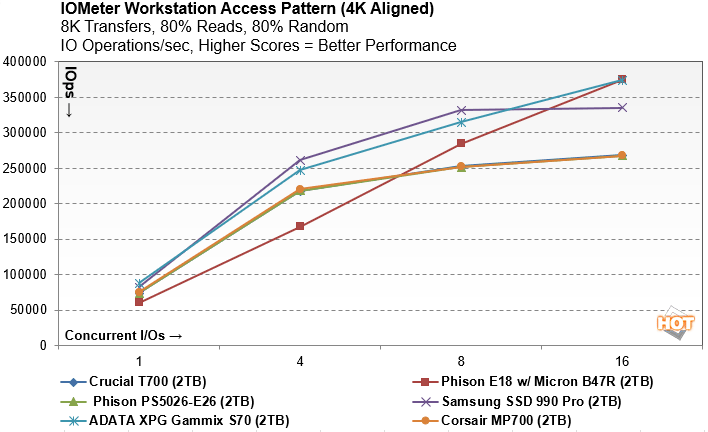

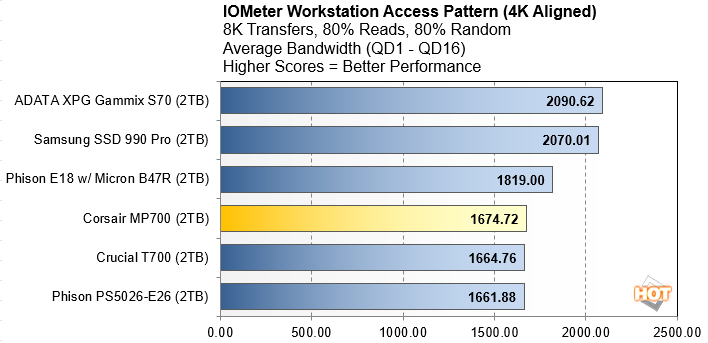
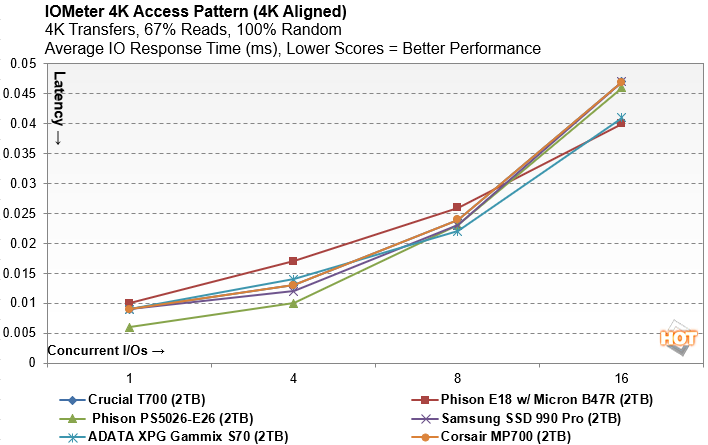
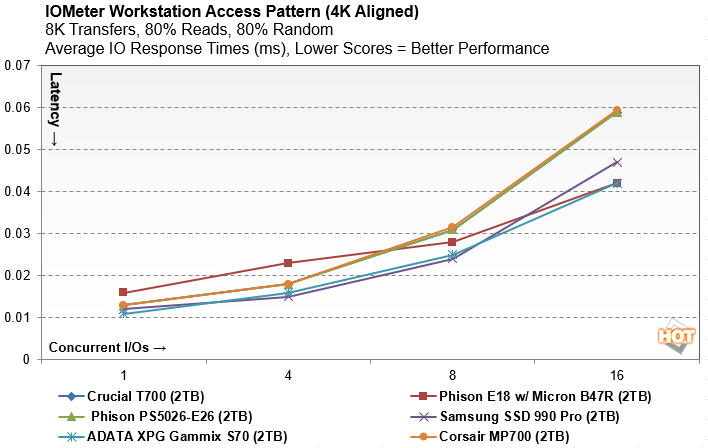
In terms of latency, the Corsair MP700 once again performs more or less in-line with Phison E26 reference platform, which is to say it offers some of the best latency characteristics at the lower queue depths (which are most important for the overwhelming majority of consumer workloads). However, the scales tip in favor of Corsair MP700 at the higher queue depths.
SiSoft SANDRA 2022
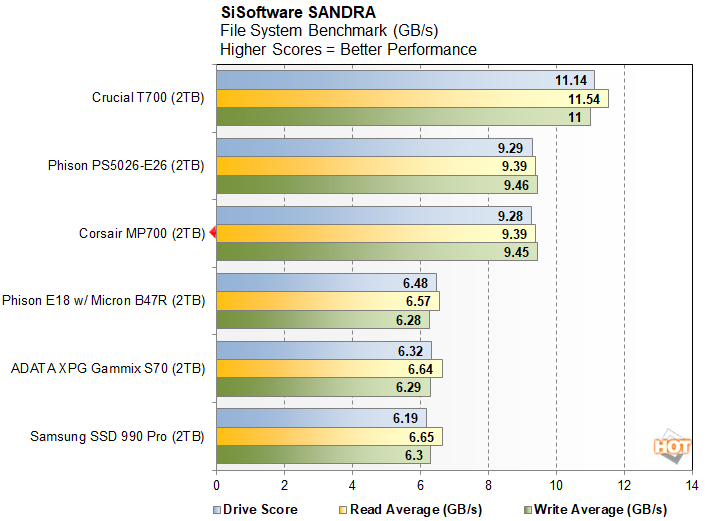
ATTO Disk Benchmark
ATTO is another "quick and dirty" type of disk benchmark that measures transfer speeds across a specific volume length. It measures raw transfer rates for both reads and writes and graphs them out in an easily interpreted chart. We chose .5KB through 64MB transfer sizes and a queue depth of 6 over a total max volume length of 256MB. ATTO's workloads are sequential in nature and measure raw bandwidth, rather than I/O response time, access latency, etc.
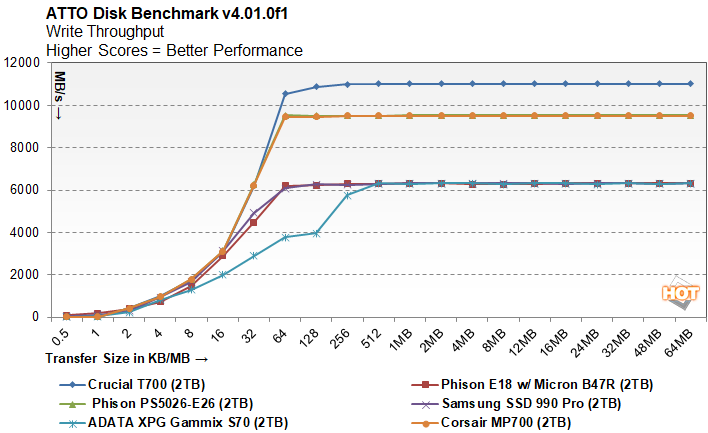
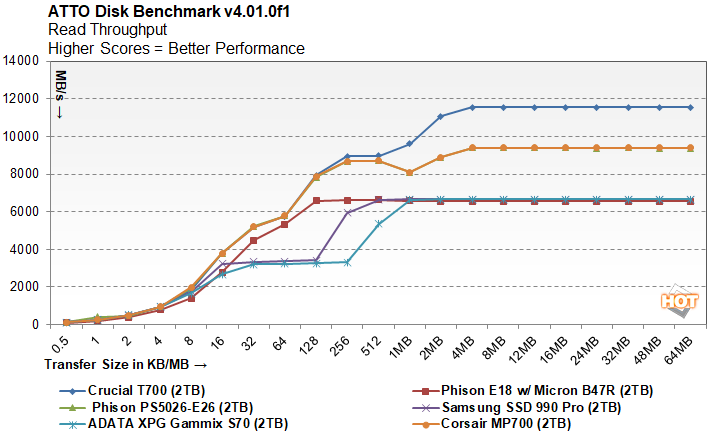
At the smallest transfer sizes, all of these high-end SSDs perform similarly, but once it hits about the 32K - 128K mark, the Corsair MP700 and Crucial T700 pull away from the pack and offer the best read and write throughput we've seen to date. That said, at larger 1MB transfers and higher, there's no stopping the Crucial T700's near 12GB/sec sequentials.
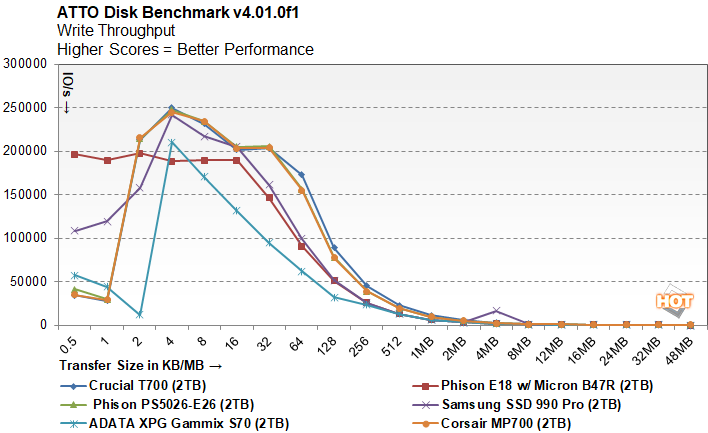
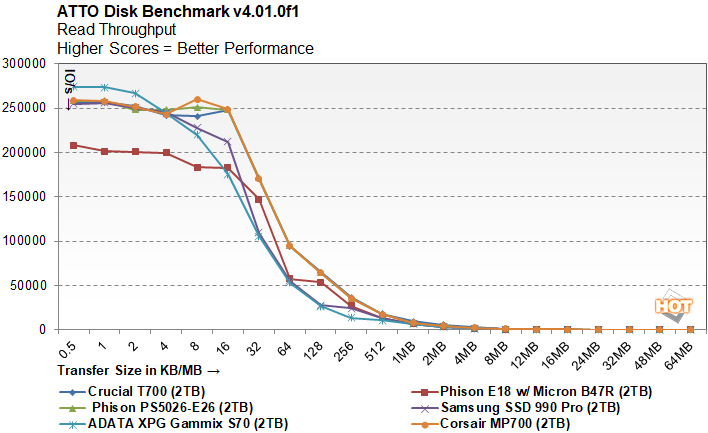
Once again, we see the Crucial, Corsair, and Phison E26 reference drive perform similarly, which is to be expected. They're typically strongest from about the 32K - 512KB mark, with the Crucial drive leading by a small margin overall.
AS SSD Compression Benchmark
Next up we ran the Compression Benchmark built-into AS SSD, an SSD specific benchmark being developed by Alex Intelligent Software. This test is interesting because it uses a mix of compressible and non-compressible data and outputs both Read and Write throughput of the drive. We only graphed a small fraction of the data (1% compressible, 50% compressible, and 100% compressible), but the trend is representative of the benchmark’s complete results.

